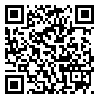Volume 19, Issue 3 (2016)
mjms 2016, 19(3): 1-15 |
Back to browse issues page
Download citation:
BibTeX | RIS | EndNote | Medlars | ProCite | Reference Manager | RefWorks
Send citation to:



BibTeX | RIS | EndNote | Medlars | ProCite | Reference Manager | RefWorks
Send citation to:
Mohaqiq M, Movahedin M, Mazaheri Z, Amir Jannati N. Following In Vitro Spermatogenesis with Long-term Preserved Spermatogonial Stem Cells. mjms 2016; 19 (3) :1-15
URL: http://mjms.modares.ac.ir/article-30-11178-en.html
URL: http://mjms.modares.ac.ir/article-30-11178-en.html
1- Anatomical Sciences Department, Faculty of Medical sciences, Tarbiat Modares University, Tehran, Iran
2- Andrologia and Embryology Department, Avicenna Research Institute, Tehran, Iran
2- Andrologia and Embryology Department, Avicenna Research Institute, Tehran, Iran
Abstract: (9158 Views)
Spermatogonial stem cells are foundation of the male reproductive system. These cells are the only conduit capable of transferring genetic traits from one generation to the next. Isolation and long-term preservation of spermatogonial stem cells for use in inducing spermatogenesis is one technique to preserve fertility in male patients who need chemotherapy. In vitro spermatogenesis is an alternative to achieve this goal. The use of an optimal model of human spermatogenesis is a major step in understanding the physiology and genetic pathways in the male reproductive system. In vitro spermatogenesis is crucial to reducing a complex process into smaller parts for experimentation, manipulation, and deriving cellular and molecular level knowledge. Is it possible to manipulate the paracrine environment and separately evaluate the effects of growth factors. Different in vitro culture systems are used to explore alternatives to spermatogenesis and obtain mature, functional spermatozoa for ultimate use in infertility treatment. In order to present a useful and practical method, this study provides an overview of different methods for the long-term preservation of spermatogonial stem cells and in vitro culture systems used in spermatogenesis.
| Rights and permissions | |
 |
This work is licensed under a Creative Commons Attribution-NonCommercial 4.0 International License. |







